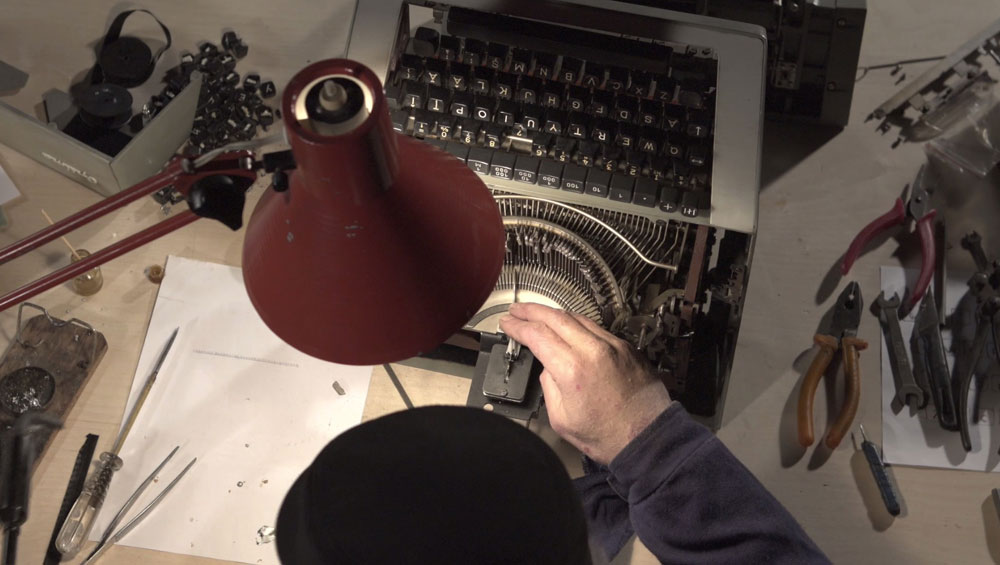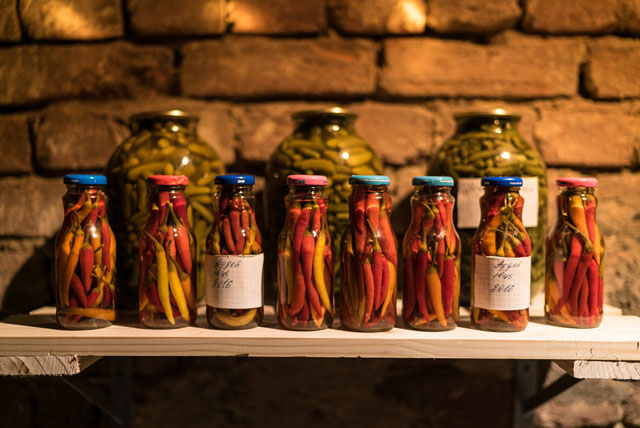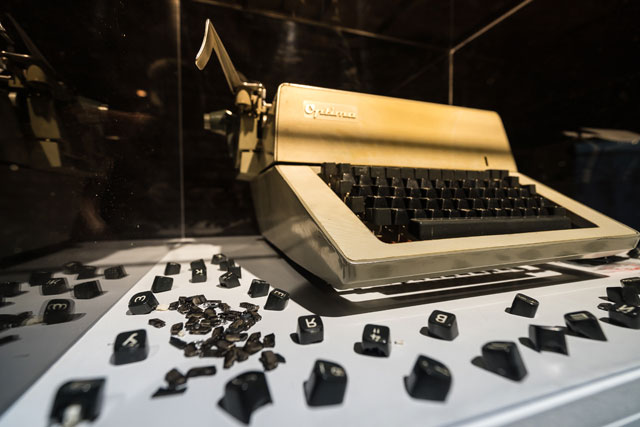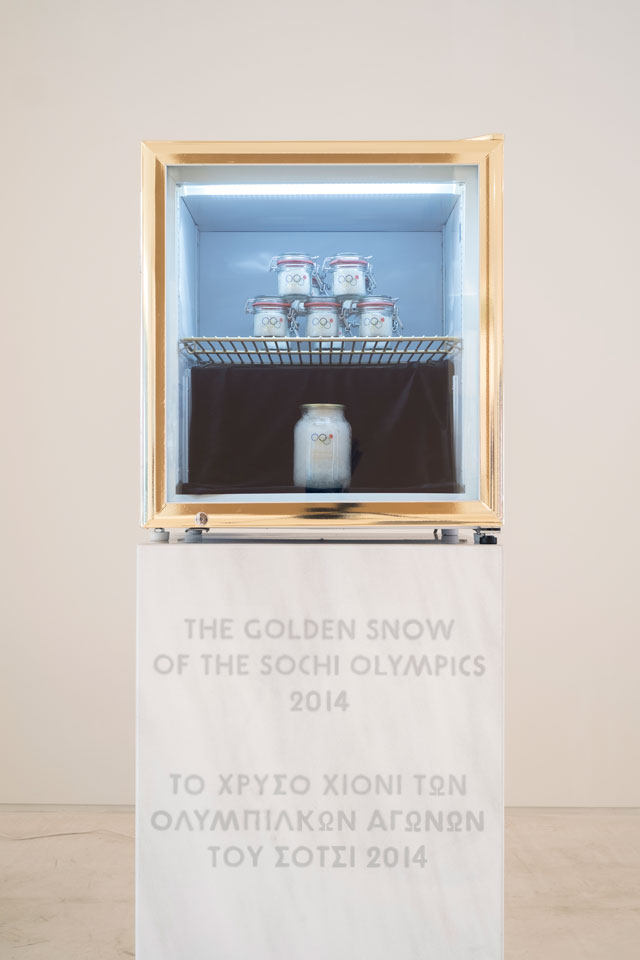
by KRISTIAN VISTRUP MADSEN
I meet the Moldovan Pavel Brăila (b1971 in Chişinău) for lunch in Timișoara the day after a swanky reception kicked off the Romanian city’s Art Encounters Biennial. Art-world friends are in town from all over, so it was a fun party and Brăila is not the only one at the table who had a late night. After traditional Romanian potato soup, he gets from his rucksack a bottle of Moldovan cognac, which he brought with him from Chişinău the previous day. In Moldova, Brăila tells us, they don’t care that much about trademarks: they have Moldovan champagne and Moldovan cognac. In fact, Moldova has some of the best conditions for agriculture in Europe, but not many people know it. And the cognac is delicious.
It is clear from the first instance that Brăila specialises in nurturing relations between people while also probing their differences – and, by extension, the differences between cultures. After a stint at Berlin’s prominent DAAD residency programme in 2007, he exhibited his film installation Barons’ Hill (2005) in the iconic glass hall of the Mies van der Rohe-designed Neue Nationalgalerie. The six-channel video slowly pans the details of the lavishly flamboyant houses of Soroca, where Moldova’s newly rich pick and mix from historical architectural styles. The pristine modernism of the gallery clashes with the less restrained grand aspirations of Europe’s periphery, exhibiting the persistence of difference and the absurd aesthetics of capital.

Pavel Brăila. New Year’s Dissections, 2017. Installation view. Courtesy of Eastwards Prospectus. Photograph: Miluță Flueraș. © artist and photographer.
It is with equal amounts of love and criticism that the artist reports on these idiosyncrasies. As the Eastwards Prospectus gallery in Bucharest wrote in its exhibition text for Brăila’s show New Year’s Dissections in January this year: “He is one of the few artists who manages to speak about a nation without becoming nationalist, to evoke a lifestyle without becoming nostalgic, to create odes without becoming a state bard.” And it is true that there seems to be no -ism to Brăila’s love for his country. Rather, it is the simpler and more profound kind of care that you would expect from someone who carries around a bottle of cognac in his rucksack to share with new friends.

Pavel Braila. Optima, 2017. Installation, dimensions variable.
From the restaurant, we walk to the Timco Halls, one the biennial’s venues, for a look at Optima, 2017, one of the works Brăila is showing in the exhibition. It consists of a large grey typewriter in a glass vitrine, which, aside from the fact that such machinery is a rare sight in the 21st century, looks completely ordinary. However, the accompanying video, Foaia De Control, 2017, shows an elderly man in the process of changing each key on the typewriter from Cyrillic to Latin script. The historical context for this strange operation is as particular as it is convoluted. Part of Romania in the interwar period, Moldova was incorporated into the Soviet Union at the end of the second world war, and, unlike Romania, which remained communist but sovereign behind the iron curtain, was made to change to the Russian alphabet.
Kristian Vistrup Madsen: When was Moldova made to change its alphabet? After the second world war?
Pavel Brăila: I’d say it had already started in the early 30s. When the Soviets came to Moldova, one of the first things they did to exert control was try to switch the alphabet. They did this in many places, Kazakhstan, and so on. But my father was born in 1938, and when he was in school he was still writing in Latin because they were not yet fully in control of the region. During the war, it went back and forth, but after it was for sure. My father was the first part of my family to live under this political reform where we lost our language. After 1945, they started to change the whole language. It was a big policy – they were inventing new words and everything. They wanted to rid Moldovans of their Romanian identity and make a new Soviet identity under the slogan: “We are all Soviet people”, like in the United States. But in Moldova there were more than 100 nationalities. It’s a small country, less than four million, but it was very international. So Cyrillic was used until 1989. In those generations, they were learning their native language, but in another alphabet. After perestroika, one of the first laws that came to Moldova – and my father said he had never believed this would happen – was a plan to change the language back.
KVM: Moldovan is closer to Romanian?
PB: It is Romanian! We were really cut off from Romanian culture. The Soviets invented new heroes, made us study new writers, or began to introduce Romanian writers as Moldovan. It’s like you have England, and then they take a part of it, Luton, for instance – like Russia took Crimea. And they say: here you don’t speak English anymore, this is Luton Language, and fuck off. This is how it happened. I wasn’t alive at this time. When I was born, already we didn’t give a damn. We were one country, and now we have to get both sides to unite. I think one day it will happen, but I don’t know when. First of all because of Moldova, and the big influence Russia still has there. We still have politicians playing this card: this is not Romanian language; this is Moldovan. But I think think it’s more like this: we have the same root, but we live different stories.
KVM: How did you come upon the typewriter as a potent symbol of the transition that happened in Moldova after the collapse of the Soviet Union in 1991?
PB: For the exhibition at Eastwards Prospectus, I took two subjects. In the upstairs rooms, it was a highly publicised story from 2014, when $1bn was stolen from Moldovan banks in just one week. Downstairs, in the cellar, it was more about stories that are widely forgotten, but are preserved somewhere that you can’t reach. And a few years back, really by coincidence, I had found this guy with the typewriters. After 1989, everyone lost their jobs and they started to reinvent themselves, their careers. So for five years, he was changing letters, he was switching typewriters from Cyrillic to Latin. I was thinking for some years after I met him that I wanted to make a video, but I didn’t have a reason. So when I was invited by Eastwards Prospectus, I approached him. In the Soviet Union every typewriter was registered, so that if you were writing anti-Soviet propaganda, for instance, you could be identified. In that sense, the typewriter itself was strategic. I made this piece to show that this process of coming back was not easy either.
KVM: Yes, because what an immense amount of work! From today’s perspective, when companies replace their computers every few years, it seems surprising that it was worth going to all that trouble.
PB: At that time, it would have been much too expensive to change to new typewriters or computers. I went to the polytechnic school in 1994, and we didn’t have computers.
KVM: The video is about 30 minutes long, but how long did it actually take him to finish one machine?
PB: About five hours of work. And, imagine, there were thousands of typewriters in the state bureaucracy that had to be changed.
KVM: So, this moment of changing the keys is a transitional moment, but by making the video in this way you are conserving it?
PB: I am making a record. For Documenta 11 [curated by Okwui Enwezor in 2002] I made a film called Shoes For Europe. It’s about how, when a train leaves Moldova for [western] Europe, you have to lift the whole train on to different rails because the trains in the Soviet Union are 88mm wider. This is also a moment of transition. For me, it is very important to show the difference between east and west. To be able to understand each other, we have to lift the fucking trains! In terms of communication, in terms of capital.
KVM: A type of translation?
PB: Rather adaptation, or transposition. Shoes For Europe was international; about the socialist and the capitalist division. But this piece is about Moldova. We were put on another track for 70 years, and to come back takes a lot of time. My mum still writes the labels on her jars of pickle in Cyrillic – she didn’t come back. She says: “I’m not going to write love letters anyway; this is all that I have to do.” She doesn’t even want to make an effort. But she is almost 80 years old.
KVM: So, to move on to another work that is also included in the biennial, Pickled Stories (2017) is a set of shelves with jars of pickle made by your mother.
PB: Now, she makes them together with my father because they are both retired. So the labels are written in Cyrillic and they are beautiful. The jars are also to preserve. We are one country, but we have different recipes. It’s this message, about conservation – something that is conserved so well, and then you open it and you share it.
KVM: I spoke to Ovidiu [Sandor, the founder of the Art Encounters Biennial] about the pickles, and he said they reminded him of the 1980s in Romania, when President Nicolae Ceauşescu was really starving the population in his determination to pay off the national debt.
PB: Of course, there are different meanings for every context. All these stories, like with languages, we forget, but they still have this impact: somehow they are not resolved. In Moldova, too, if you didn’t preserve your food yourself, then, well … you could starve in the winter.
KVM: In that sense, pickling vegetables is really not an idyllic pastime. If you don’t do it …
PB: … your menu will be much reduced!
KVM: This work has been put into the context of “relational conservation”. What relations are these? To your family, to your country?
PB: With my mother, with my family. In Moldova, you have this thing: guests just pass by, you don’t have to call, you just knock and say: “Hey, how are you?” Mum is not prepared, so she just goes to the cellar and picks up some pickles. And they’re really tasty. We have some bread and we have wine. My father makes wine, too. Next week, we have to pick the grapes and make the wine.

Pavel Brăila, The Golden Snow of the Sochi Olympics, 2014. Snow from the Sochi Olympics and various materials, EMST—National Museum of Contemporary Art, Athens, documenta 14. Photograph: Mathias Völzke.
KVM: Moving on from the jars of vegetables, I am interested in the jars of snow that you showed in this year’s Documenta 14 in Athens. They were also in pickle jars inside a little freezer on a marble block that said: “The Golden Snow of the Sochi Olympics.”
PB: I actually first made that work for Manifesta 10, curated by Kaspar König in St Petersburg in 2014. That year was a rich period for events: apart from the Winter Olympics in Sochi, there was also the Russian war in Ukraine. You know they spent $50bn on the Olympics? $50bn! That Olympics cost more than all the Winter Olympics together. I mean, Sochi is a summer resort! Especially in Russia, where half the country is permanently covered in snow, this is absurd. But they decided to do it anyway. The piece was done much before, since I discovered they were preserving the snow for years. But the decision to go through with the work was finally made when the Russian team took home a record number of medals. For them it’s “The Golden Snow of Sochi” because they took the first place, but also because they spent so much money.
KVM: They may as well have covered the hills in gold.
PB: A huge layer of gold! So I went to Sochi and collected 20 litres of snow and put it in a freezer. This piece shows the modern image of sport: all this doping, this competition between the countries. It’s not about people; it’s about politics. It’s about completely different things from what was at the root of the Olympic Games. Money, first of all. The only thing I asked Adam [Szymczyk, artist director of Documenta 14] to do, was to make the pedestal out of Greek marble, from almost the same place that the Parthenon came from. But mainly, for me, this piece is about the craziness of contemporary society.
KVM: Like a streak of Soviet absurdism. And, of course, in Athens there were other parallels to be drawn as well. How the 2004 Olympics really impacted the city, for instance, and also the way that an event such as Documenta, which is a kind of olympics of art, enters a city like Athens. So how did you feel about being part of this Documenta in Athens with all of these contradictions and controversies happening around it?
PB: For me, it’s really strange that there were all these bad reactions, because what Adam did was to show the differences. All of Europe is living in a bubble. I don’t know that Adam would say this, but, for me, all the conflicts in the world are run by westerners, but they are cut off from them.
KM: You touch on this idea in The Ship, a new work you made for the Kassel chapter of the exhibition. You added a transparent layer to the surface of a public bus, and put blue liquid inside, which then gushes around, as if the bus were submerged in water. To me, this piece is about bringing problems that are more pertinent in the Mediterranean region into Kassel.
PB: When the war in Syria started, and I saw all those images of drowning people, I had different ideas in mind. One Thousand and One Nights was written in Syrian territory. It is one of the oldest fairytales and they came up with the idea of the flying carpet. And these people, they cannot fly: they have to escape from their land and they drown. In the 21st century, with all our technology, I cannot understand how it is possible that people die like this. So I really wanted to show The Ship in Germany, because it has this status of a “safe place” – that’s why I put the bus in Kassel. The people in the bus are completely sunk.
KM: Also in a metaphorical sense, you mean?
PB: In every sense. You can look at what we are eating nowadays. The bread is full of chemicals, the fruit is manipulated. It is called The Ship with reference to Hieronymus Bosch’s painting The Ship of Fools: the ship that is half drowning, but people are still having fun on it.
KVM: I’m interested in this centre-periphery dialectic that is going on in Documenta, and also in The Ship: dislocation. Bringing issues from one place to another. You are based in Moldova, but have spent a lot of time in Berlin. Do you feel at the centre, or on the periphery?
PB: You have to be at the centre because you have to be in the right context. Moldova is out of context, but it is where my roots are; I really love this place. If I wasn’t in Moldova, I would feel … For me, it is really important to be there and to show it to friends and people who are interested in what I am doing. It’s very important. In any case, the periphery is made by the centre.
KVM: You told me earlier that almost half a million people have left Moldova in the last decade, and that the actual number is probably even greater than what the state has so far publicised…
PB: Yes, Moldova, I think, is a country that will disappear. In Romania and in Moldova the villages are dying. People don’t know what to do; they don’t know how to survive. They have to move. There’s a huge migration. First, they go to the city, and then to another country where they can get a job. If you go to a village, you’ll see there’s still poverty. Although it’s a great land, there is great agriculture, you have to keep up with modern life: you have to buy iPhones for your kids! It is the most demanded gift for Christmas. All over the world. In Moldova, too: teenagers, they want a bloody iPhone. But it’s sad. We lose what we have. We lose our roots. We lose our history. It’s the most important thing that we have.